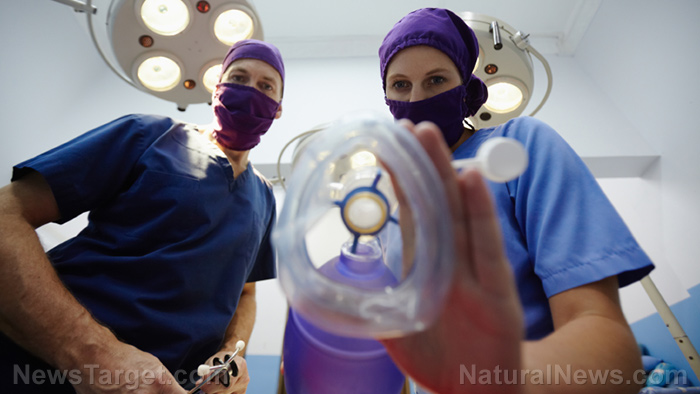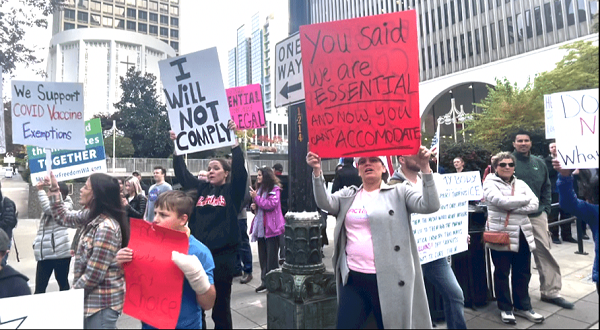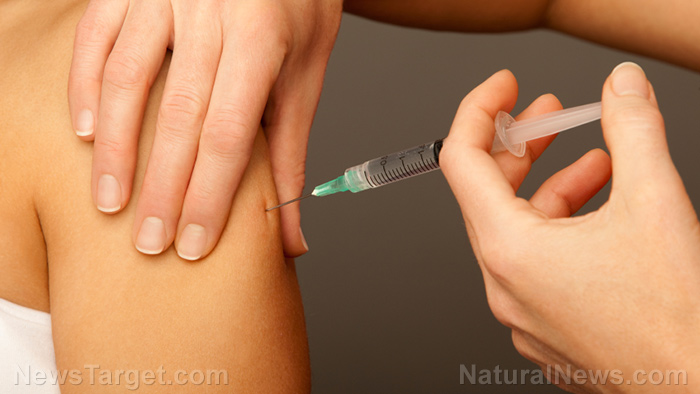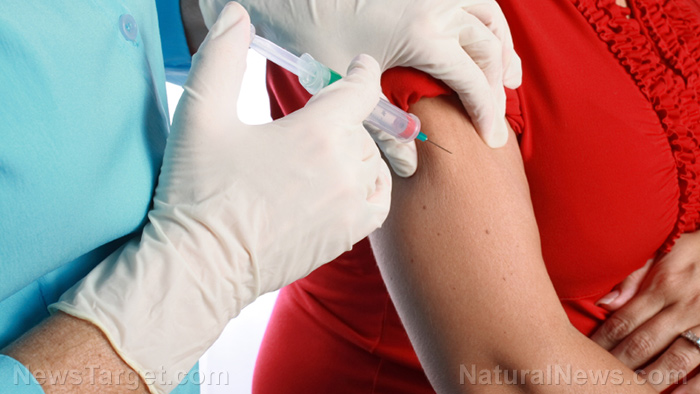Lateral flow covid test kits in UK sent out to millions of schoolchildren with wrong instructions
12/04/2021 / By Nolan Barton
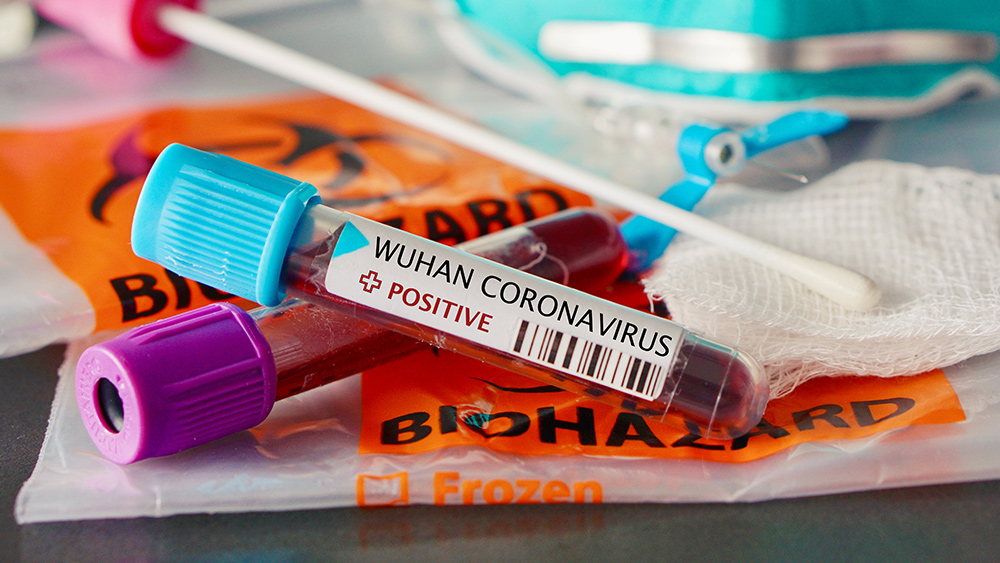
The controversial lateral flow test kits have been sent out to millions of schoolchildren in the U.K. with the wrong instructions.
The kits contained guidance saying that they were to be used by people suffering symptoms of coronavirus (COVID-19) and that they were to be administered to people “suspected of COVID by their healthcare provider.”
Those were against the official U.K. guidance that says the primary purpose of lateral flow tests is to catch asymptomatic carriers, who make up a third of all new infections.
Some schools have given pupils test kits with out-of-date leaflets with an instruction that reads: “You can use this self-test kit if you have symptoms or if you are asymptomatic (you do not have symptoms).”
On its website, the National Health Service (NHS) says lateral flow tests are only for people “without coronavirus symptoms.”
Britons showing symptoms are supposed to get a polymerase chain reaction (PCR) test, which is much more accurate. This process automatically logs the case in the government’s coronavirus contact tracing program.
Experts fear the oversight may lead those with symptoms to do the lateral flow tests instead of getting PCR tests. “If symptomatic people use lateral flow instead and fail to report their result, then we’ll lose control and it won’t give contact tracers a chance,” one scientist said.
Britain’s drug watchdog, the Medicines and Healthcare products Regulatory Agency (MHRA), has started investigating the matter.
Lateral flow tests mired in controversy
The lateral flow tests have been mired in controversy since they were put into mass use when schools in England reopened in March. They are now available for free to all adults with no COVID symptoms.
The U.K. government has been criticized for rolling the lateral flow devices out for people to do themselves, despite manufacturers admitting they are built for professional use and on people with symptoms.
A University of Oxford and Public Health England (PHE) evaluation of the Innova lateral flow test found that the positive cases it detected fell from 79 percent to 58 percent when it was used by untrained members of the public instead of lab experts. (Related: SCIENCE FAIL: Review finds rapid coronavirus test kits miss 42% of asymptomatic cases and are prone to false-positive results.)
About three million lateral flows are being deployed every week, mostly in schools where children and staff are required to be tested twice weekly. The U.K. prefers lateral flow tests in schools because they can give results within 15 minutes. They are faster and cheaper than PCR tests, which the government uses to diagnose people.
A PCR test can cost upwards of £180 ($250) per person, with the swab needing to be processed in a lab. On the other hand, lateral flow tests are not lab-based and can be done on the spot using portable equipment.
However, numerous studies have shown the kits are far less accurate when self-administered. Experts have already raised concerns over the sensitivity of these tests in asymptomatic cases.
A Cochrane review found that the kits fell short of the World Health Organization (WHO) standard that every COVID test must pick up at least 80 percent of infected people. COVID infections were spotted 72 percent of the time in symptomatic cases on average, but only 58 percent among asymptomatic individuals.
But government officials insist the benefits of testing people without COVID symptoms far outweigh their downsides. The U.K. has spent billions of taxpayers’ money securing the tests, despite concerns over how well they work.
Government experts are steadfast in their belief that the do-it-yourself (DIY) swabs – widely used by schools, care homes and the NHS – are a key tool in reopening society. The tests are said to have identified 120,000 cases that otherwise might not have been picked up.
DIY swabs can lead to public health disaster
Jon Deeks, the biostatistics professor who leads Cochrane’s COVID-19 test evaluation, said that hundreds of people could be affected by one person getting a false-positive result. “If you get a positive result it is essential that it is confirmed by a PCR test as soon as possible to check that you and your contacts do not isolate unnecessarily,” Deeks said.
He noted that sensible use of the lateral flow tests would be to deploy them alongside PCR in testing centers, so people would take both tests at the same time.
This would enable contact tracing to begin “straight away, removing that three-day waiting period” for people who test positive in the rapid test, while still ensuring that additional cases were picked up by the PCR test. “In a test and trace sense it’s a really good idea,” he said.
Scientists have warned the DIY swabs could result in a “public health disaster,” with thousands forced needlessly to self-isolate and others given false confidence that they are safe.
One of the biggest issues is that the tests have low sensitivity. In other words, they do not pick up everyone who is carrying the virus.
People who have the virus but still test negative – false negatives – might get misplaced confidence from the test result and be less strict about following lockdown rules than someone who hasn’t been tested, experts say.
In a study done on members of the public in Liverpool, the lateral flow test detected 891 positive results while the lab-based PCR swabs found 2,829 positives in the same group. This means 1,938 people got a wrong negative result from the rapid test.
Fears over numbers of false positives have also been growing. PHE has reported that more than 26 million lateral flow tests were taken between March 8 and April 4. Around half of the 30,904 positive results identified were followed up with a PCR test, of which 3034 (18 percent) came back negative.
Follow Pandemic.news for more news and information related to the coronavirus pandemic.
Sources include:
Tagged Under:
RECENT NEWS & ARTICLES
BadMedicine.News is a fact-based public education website published by BadMedicine News Features, LLC.
All content copyright © 2019 by BadMedicine News Features, LLC.
Contact Us with Tips or Corrections
All trademarks, registered trademarks and servicemarks mentioned on this site are the property of their respective owners.





